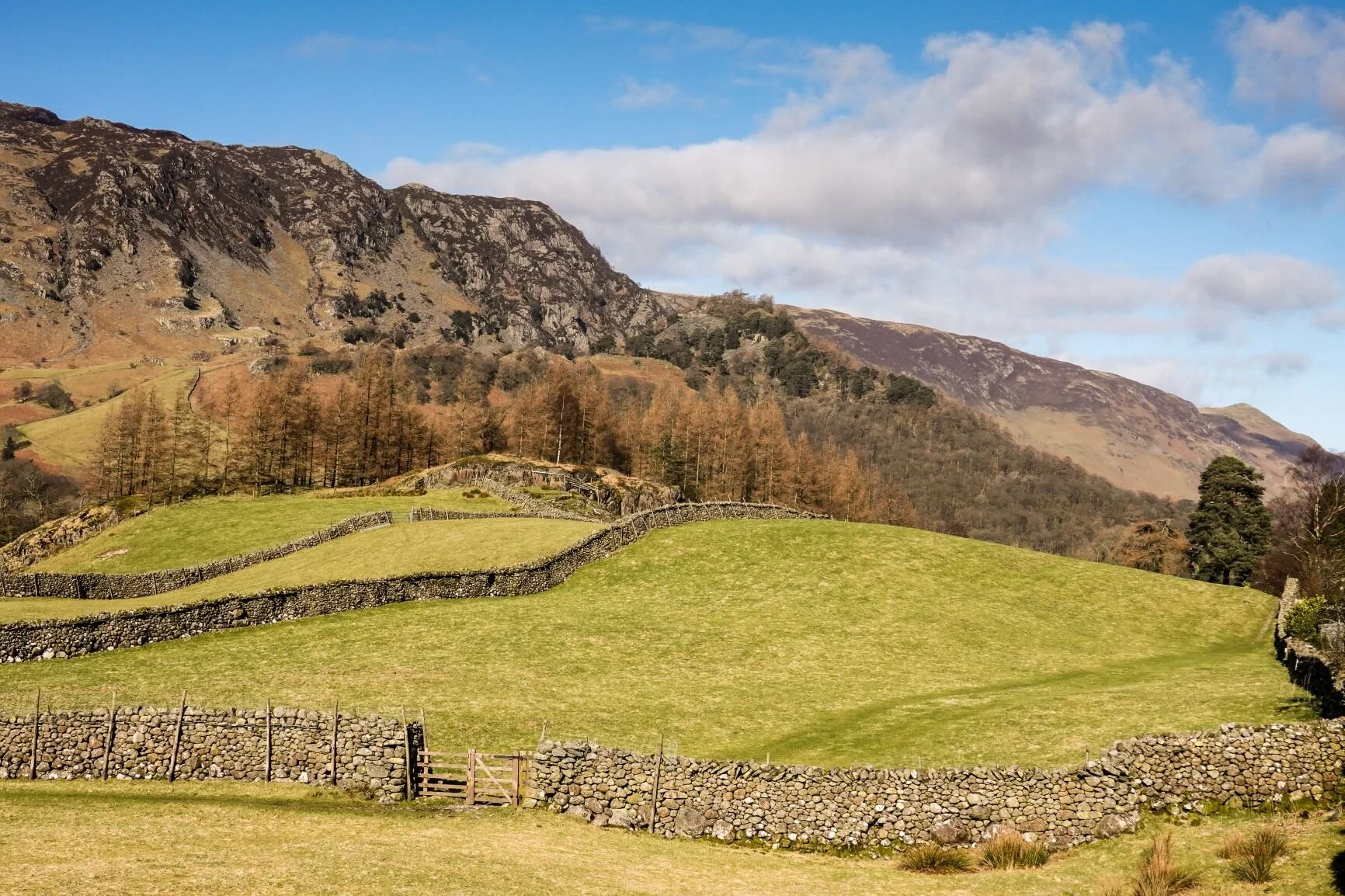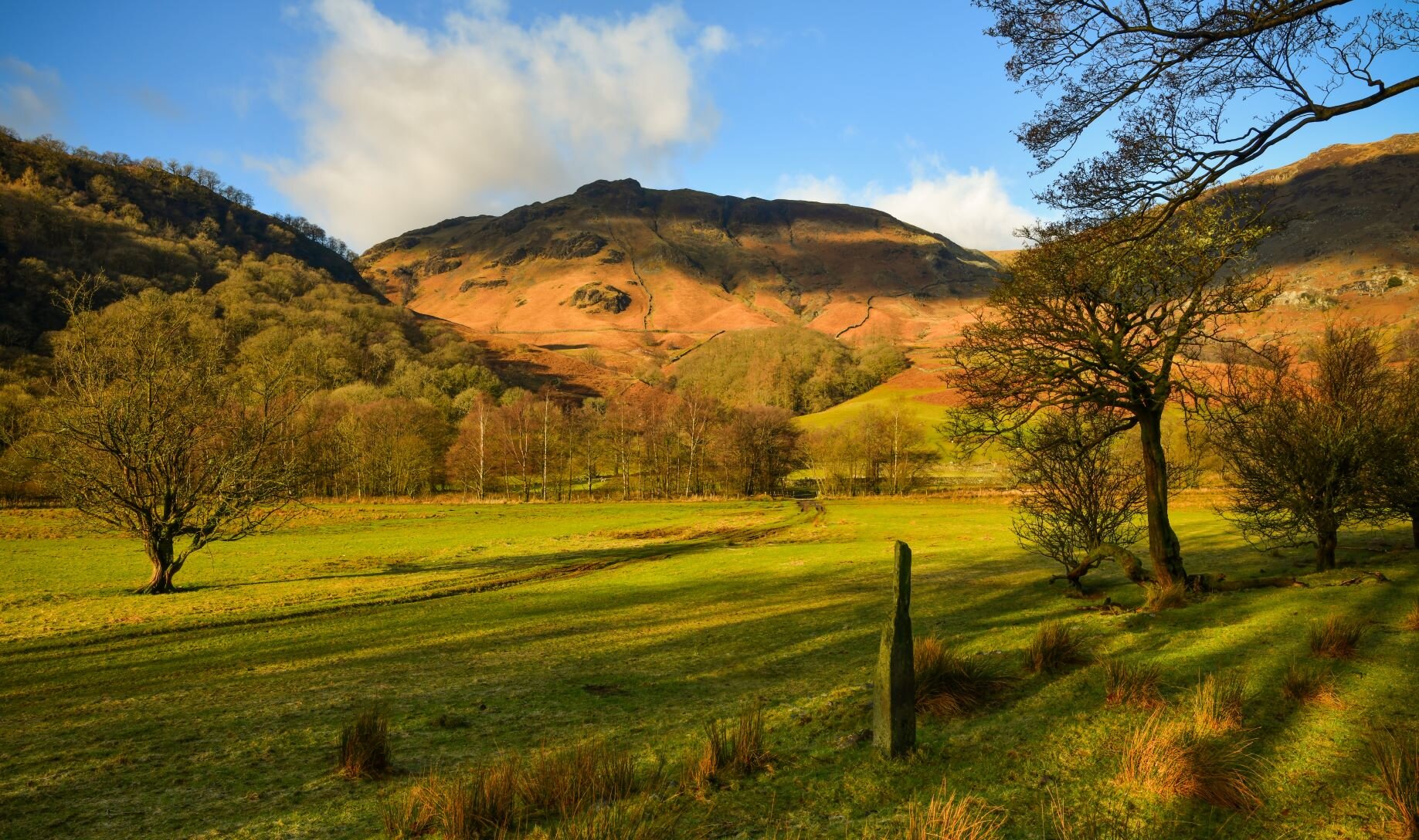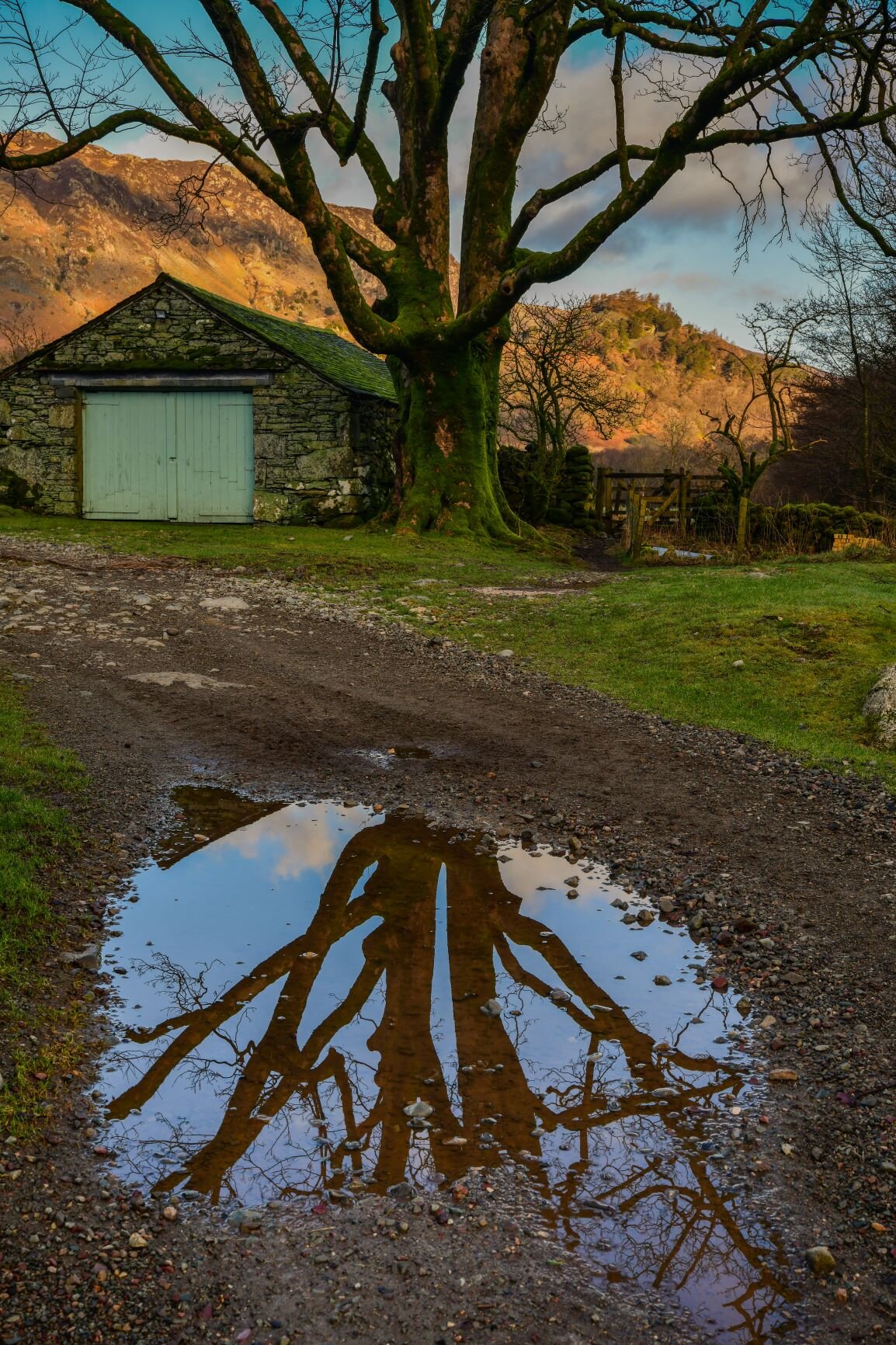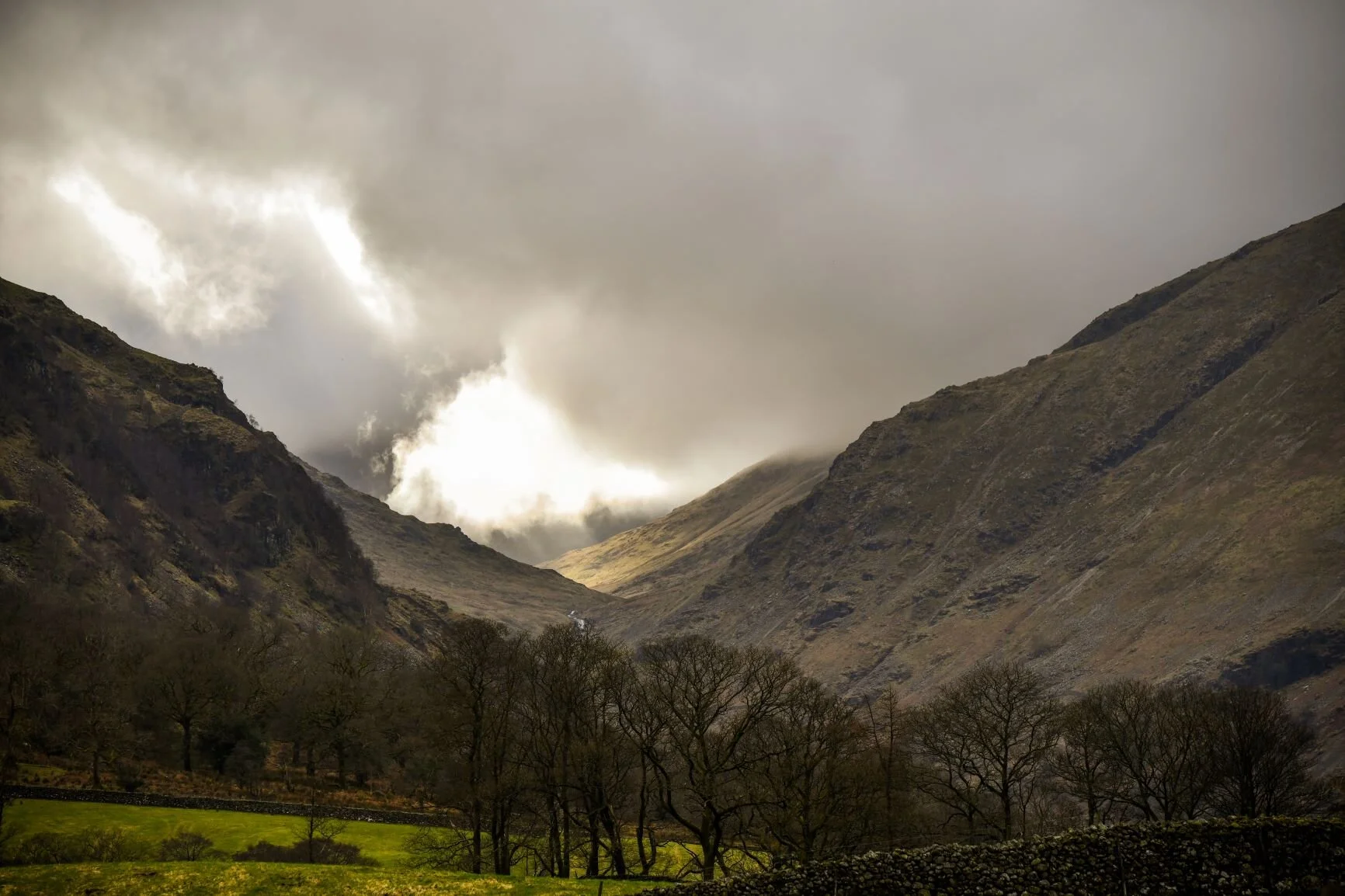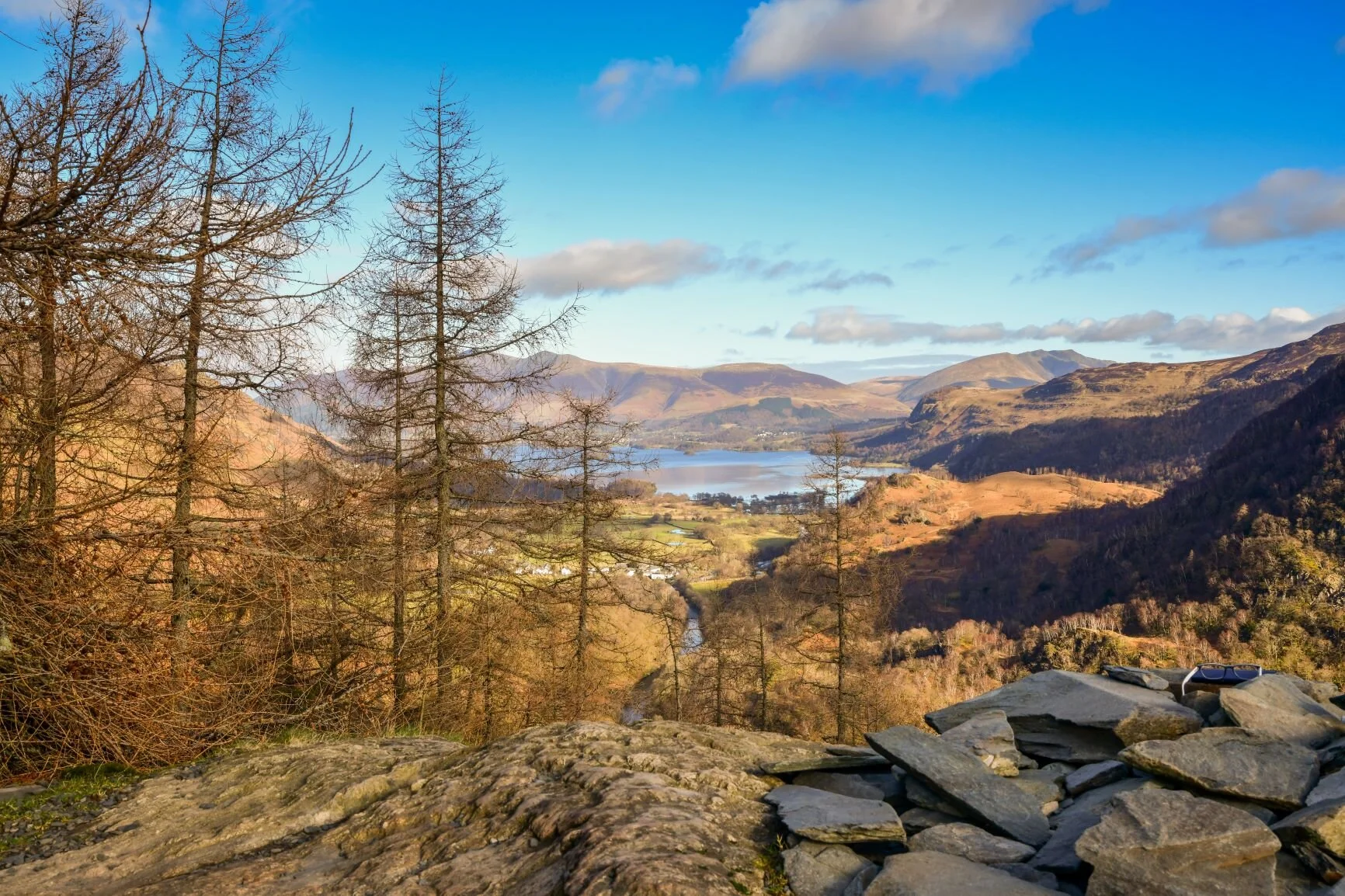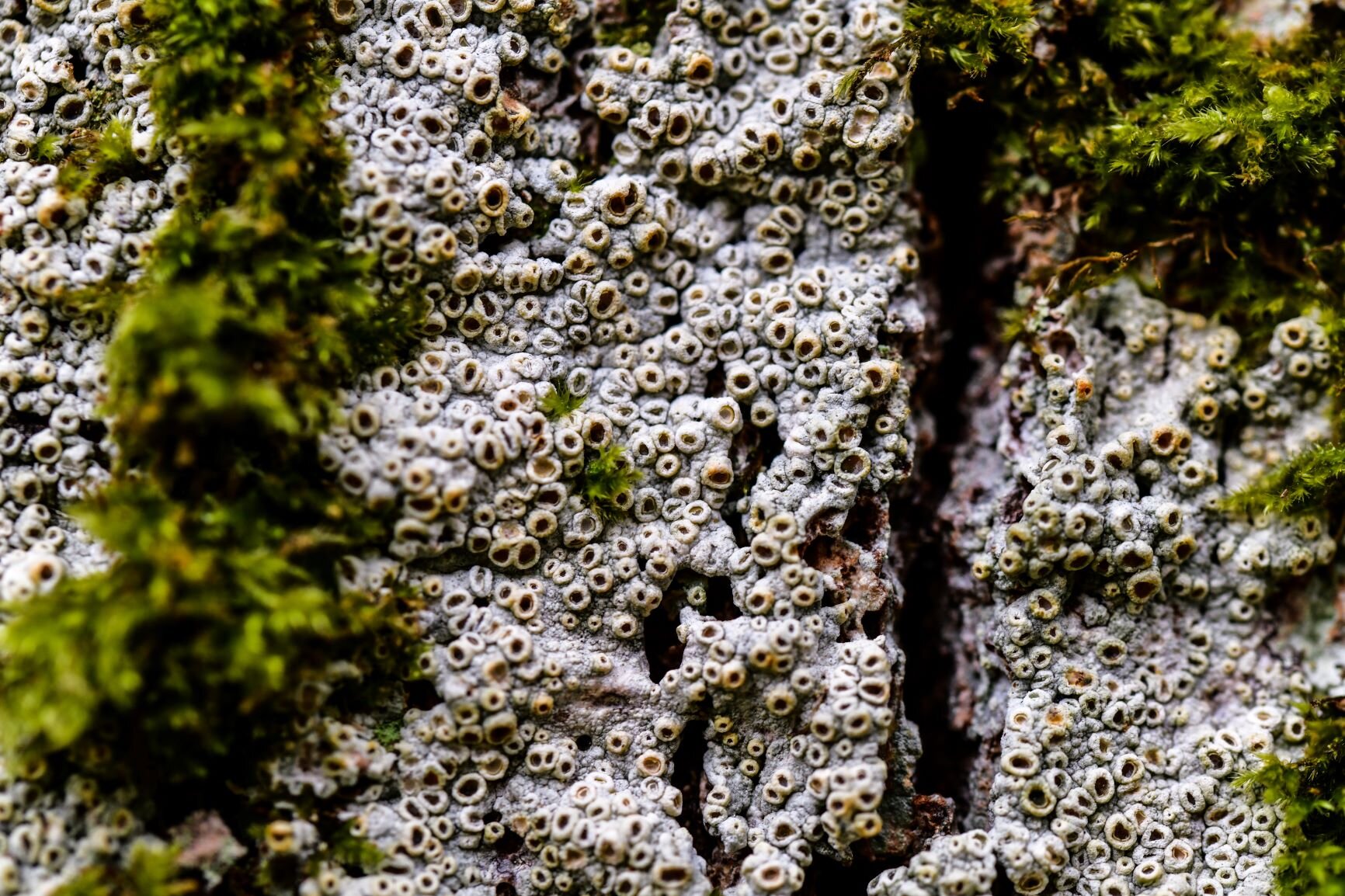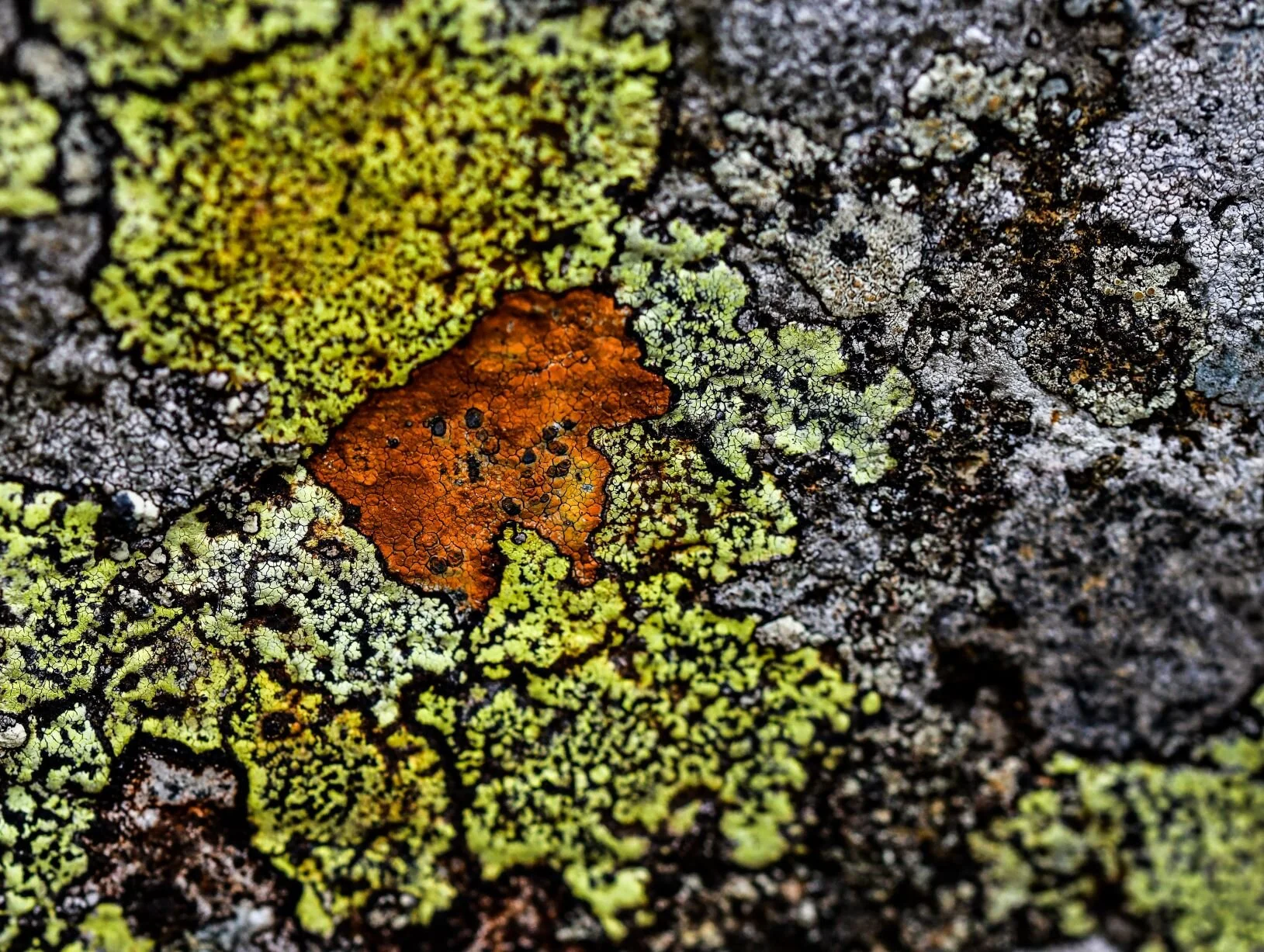Deep Borrowdale: moss, rocks & us
Aim of the experiment
To explore and experience different versions (sizes, perspectives, contexts) of the ‘self’ in the context of the geological, botanical and man-made landscapes around Rosthwaite village.
Background
A sense of awe at the deep time of landscapes was one of the key aspects of the Romantic sublime. While one of the elements of this experiment involves exploring being human in the context of geological time, it extends this by also considering our sense of self in the context of both botany and land-use, to compare how we experience ourselves in these different contexts today.
There is also a significant personal element to this experiment. My own knowledge of the Lakes arises not only from living locally these past few years, but also from having spent huge periods of my childhood in Rosthwaite, Borrowdale. Yet while doing research for my Mountain Leader assessment last year, I realised how little I knew about these places that I know so well. I had known from a young age that the area was glacial, and what was meant by a U-shaped valley. But I hadn’t known that those ridges in the fields, which I used to run along, were glacial moraines, and that the cottage our family owned backed directly onto a tiny hill which was actually a roche moutonée (google it!) I hadn’t known that the Lake District was almost entirely volcanic, and that Borrowdale gives its name to the key geological period when most of the Lake District was formed. And I certainly hadn’t been aware that at one point the Lake District fells were as big as the Himalayas! Meanwhile, turning to botany, Johnny’s wood (between Rosthwaite and Seatoller) had been one of my favourite places to play as a child - blithely unaware that it’s classified as temperate rain forest, and internationally important for moss, liverwort and lichen. Yet at the same time, Borrowdale is also a valley where human impact is writ large, both through sheep farming and mining. In other words, it’s the ideal context in which to explore this experiment’s themes.
Route instructions
Click on the image to open an interactive version of the map on Viewranger,
or you can download the GPX file of my route here. (© OpenStreetMap contributors)
This route borrows from, yet also significantly varies, that outlined by Ken Bond in the Cumberland Geological Society’s fascinating book Lakeland Rocks and Landscape. I strongly recommend purchasing a copy if the themes explored here are of interest (not least since Bond goes into a lot more detail about the geology than I can here). I’m currently developing a second, much longer route, incorporating other features such as the Bowderstone, the woods of Lingy End and Honister Slate Mine - watch this space!
Route grading: Medium (6.4 miles & 2,060 feet of ascent)
Accessible alternative: this route is not accessible, but many of the features described are directly visible from Rosthwaite and could be explored from a distance. Alternatively, you might choose to do the route in sections, accessing the points of interest from different locations and travelling between them by car (Rosthwaite for the moraines and roche moutonées, Borrowdale YHA for Jonny’s Wood, and varying the route by exploring mining at Honister Pass).
Starting & finishing point: National Trust or Village Hall car parks in Rosthwaite (see here on google maps).
Route adaptation for walk-from-home
In order to recreate this walk in your local area, you will need to identify (a) features of geological interest (b) features of botanical interest (even if this is just recognising the flowers or trees you pass en route), and (c) some ways in which humans have imprinted themselves upon the landscape (this is unlikely to be difficult). Apply the below exercise to these features.
Writing & Arts Ideas, & Virtual Alternatives
In order to get the most out of these experiments, it’s recommended to do some research in advance about the geology, ecology and history of the Borrowdale valley (lots of material available if you google it online). This won’t only provide material for your work, but will also provide context for exploring the experiences of ‘self’ which the experiments involve.
The aim of these experiments is to experience how one’s sense of self feels bigger and smaller in different contexts, and to capture a sense of this in writing or images. For anything you write, try and think about form as well as content (how can you explore these sensations through how you write your response, as well as what you write. I’m not sure my own poem is the best example of this, but I do look forward to reading what you come up with!) For visual work, how can you use perspective and composition to try and communicate your changing sense of the above?
In the image to the left, I’ve tried to capture a wide range of different contexts all at once. The cultural domestication of the landscape with the garage. A sense of wildness in the craggy outline of Castle Crag (a fell which is actually decimated by mining). The dominating presence of the tree, and how its reflection got my imagination going... Did I feel big or small? How does the image make you feel?
The Howe
i.
The municipal slate houses rest up
against the Howe like glaciers
while erratic boulders lodge
in the drystone dykes as the ice begins
to melt. We’d remembered to ask
the moraine to close the gate
the way the private gatekeeper asked
us to but it? said nothing.
The semi-detached glacier leans
against my bedroom window glass.
The local authority has removed
the offending static caravan
the neighbours had installed without asking.
I take comfort from the permanence
of extra-terrestrial lichens in the nearby
woods and flaked rocks. The future is plucked
ready for the pot. I open my window
and fill my cup with meltwater.
ii.
It’s 1990,
and the beginning of a new decade
is mining for compliments that the
approaching millennium sniffs at:
Banks of slaty cleavage. Compression.
Shale type sediments of ash.
‘Who are you calling a slag?’
To Rigghead Quarry and back
as a euphemism for.
I was the kind of teenager who.
(My mother has returned from holiday
in the Alps bearing the gift of a sage,
lavender and white shellsuit).
I was the kind of teenager who wanted
to talk about juniper, and the art of
supporting an unfashionable football team
to Rigghead Quarry and back.
I’ve thought about tippexing out
the mine workings that you’ve written
in the side of the nearby fells
but instead I just rip out the offending
pages of my jotter. Are we still best friends
and is it raining again?
Yet more meltwater.
I’ve been learning how to learn, economically.
I walk to the top of creation and destroy
the evidence.
I’m wiping the slate clean with you.
iii.
Imagine a solar system
made of moss.
Jupiters of liverwort.
Miniatures in maximum.
The Howe, not why, to end.
I sit down on the summit of
the smallest nearest mountain.
Remember that I lost my diary
yesterday and wonder what this makes
of all tomorrows.
If you find my diary? Live it.
Follow all my lost commitments to
the end.
Photo galleries
Click on the below images to open separate gallery pages organised according to ‘theme’.
